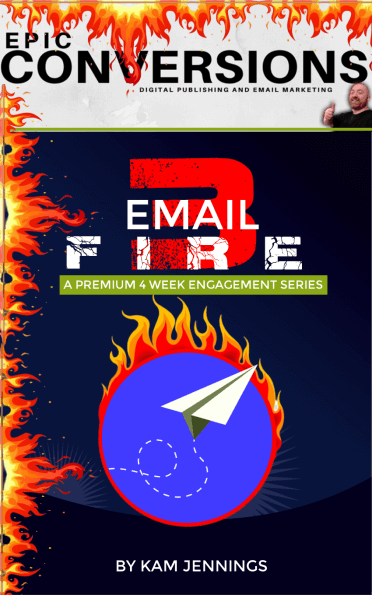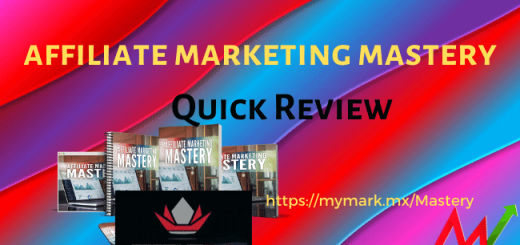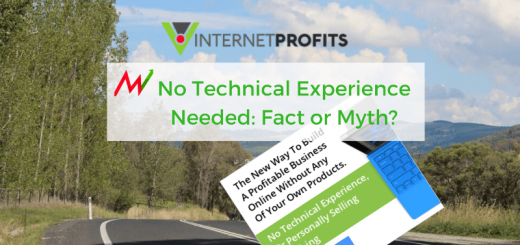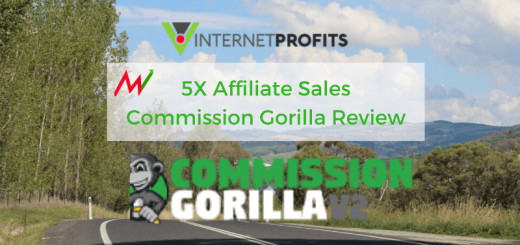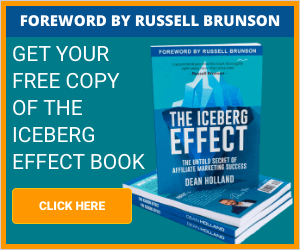Case Study: Email Engagement Strategy
Introduction: Email Engagement Strategy
Launch of Newsletters on Substack from Kam Jennings got me thinking about blogging and email and newsletters. I have a business problem – my list is not engaged. So I need an email engagement strategy. Can I use a newsletter to address this? Have I got what is needed? Here goes with some thinking out aloud
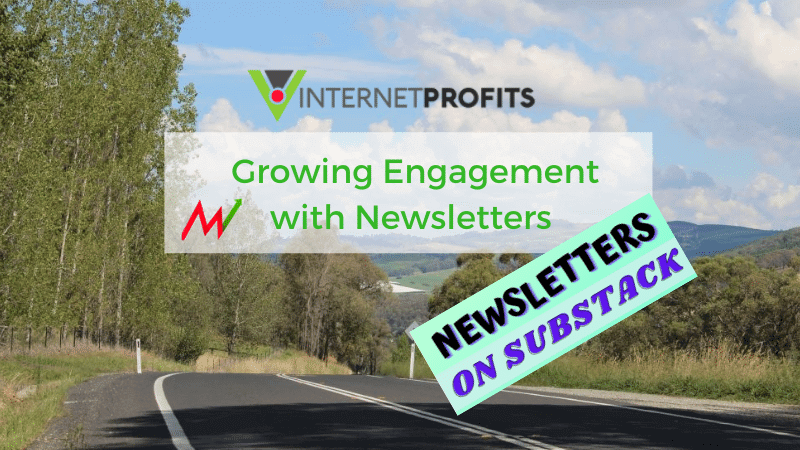
Regular Content: Blogging Track Record
I have been writing a blog in different forms on a fairly regular basis for quite some time. I have this blog – though I do not post here very often – say twice a month. This is mostly about my affiliate marketing journey with a little investing stuff too.
I publish more regularly on a cryptocurrency-based blogging platform called Steemit. Over there, I had published over 500 investing blog posts and close to 100 on orchid spotting. Yes, when I am not investing or trading or cycling, I am walking the Aussie bush looking for orchids.I have dropped the investing posting since the market collapsed when the Covid-19 thing broke in March 2021 – I stayed away from the markets = not a lot to report. You can read about that in Income Strategies using Options where I went through my rationale for staying away.
Blogging on Cryptocurrency Platforms
The way Steemit works is one gets rewarded in STEEM for upvotes people make on your posts. There are also rewards for curating other people’s posts. Ever since I started on Steemit in 2016, I have been able to generate some tidy returns from regular posting ($4,932 on December 18, 2020). The process is simple enough. Write about stuff people are interested, set up good tags and add great images (your own images as copyright rules are enforced). Follow interesting people in your niche areas and they will follow back – if the content is good enough they will upvote it.
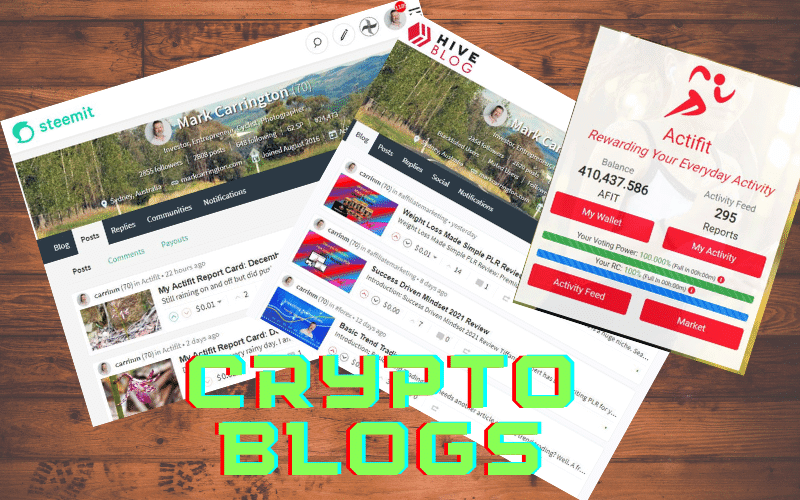
Earlier this year there was a bit of a falling out in the Steemit community when Steemit.com was taken over by Justin Sun, founder of TRON cryptocurrency. A spin off platform called Hive.Blog was created. A large slice of the Steemit community moved across there. Steemit members were allocated an equivalent amount of HIVE to the STEEM they held. Surprisingly, STEEM coin price has held up well even though a large pile of members defected to Hive. The net result is my holdings on Steemit have almost totally been matched by holdings on Hive (not quite at $3722). [Normally one would expect the two parts added together to equal the value before the split]
Late last year, I started to post a daily fitness post on a platform called Actifit. Actifit is also a cryptocurrency-based platform. I collect Actifit coin for each post I make about my daily activity. I get paid for activity between 5,000 and 10,000 steps a day. They do have a requirement to post a minimum number of words too – it is not enough to synch the Fitbit and do an upload. Got to write something. Well I have – 295 posts so far.
I decided to make my daily post a photo journal of the stuff I do – orchids I see, scenery I capture, food I cook, trades I make and affiliate marketing stuff I promote. The best part of the Actifit app is it also cross posts the posts to Steemit and now also to Hive.
The net-net of the story thus far is I have been producing material regularly and publishing it = effectively a newsletter. I do have active followers and I do get upvotes on my posts = I do get paid in cryptocurrency. To date, I have not powered down and sold any coin to convert to cash. I have a long term view on the platforms and the associated cryptocurrencies = I am a HODLer. I am however getting paid to post = step one achieved.
Building a List
Now the hard part of blogging on Steemit and Hive is building a list. It is easy enough to get people to follow one’s account. If any of the posts make it to the trending list one gets followers. Keep following interesting people and they follow back. And if a whale gives you an upvote, you climb a rocket ship. It is another matter to get a list of subscriber emails. That requires persuading them off the platform to an opt-in page.
Now to step across to the list building side of the case study. I have built a sizeable list of email subscribers (close to 15k). I have built it almost exclusively using solo ads with a big slice coming from one supplier. Like most solo ad based lists, the list is not very responsive with open rates below 1% and click rates even lower than that. Over the last 5 or 6 months, I have worked hard on trying different ways to get engagement going and offering a wide array of products across different niches and topics.
It feels like I have been throwing cooked spaghetti at the ceiling to see what sticks. In April 2020, I started to email my daily Actifit posts from a Steemit RSS feed to the email list daily. I was amazed to see that open rates jumped an order of magnitude (e.g., 16% in August). That tells me there is life in the list – they were prepared to look at the daily ramblings and they do read them – well more than my other stuff.
With low open rates it is hard part to get value from the list. Now we all know that engaging with a list is all about building a relationship. The daily ramblings feels like it was working better at that than the other things I was doing. Now there are two schools of thought on an email engagement strategy for an unengaged list
- A list has value – just got to find ways to get open rates and engagement up
- Cull all the disengaged members and replace with new.
Now I have been leaning to focus on the first path = the list has value. After all I did pay good money to get people there. Keep working at it to find paths to engagement – people sign up to a list with a set of expectations and dreams and aspirations – just got to find what they are.
Downsides of an unengaged list
Now there are downsides to a sizeable list that is unengaged. My autoresponder (Getresponse) charges based on the number of subscribers in the lists. This is pretty expensive for a list over 10,000 people. I suspect that they also manage delivery based on open rates. The lower the open rates, the less they deliver BUT they still charge for the list size. This gives me an incentive to trim the lists or migrate the unengaged members somewhere else (e.g., somewhere cheaper). I doubt I have a delivery problem. I do have my own emails in all my lists. My emails are arriving every time I send a broadcast and they are not going into my spam folder.
List Building and Newsletters
This is what struck me when I read Kam Jennings approach on Newsletters on Substack. Read my review here
- I have a list that will open my newsletters.
- I am writing regular newsletter-type material
- Substack offers a way to blend free and paid content.
- Substack offers a way to build a list of subscribers from other people already participating on the platform (11 million people)
- Substack has facilities to upload lists from other email list providers.
- Substack has the tools to cross post from other platforms including using RSS feeds.
Newsletters on Substack gives me a way to build a list of new subscribers some of whom will pay and I can broadcast to the ones I already have at lower cost in a community situation without the crypto angle on Hive.Blog and Steemit. A lot of people feel that is just mumbo jumbo. And I may even be able to get some of them to subscribe to paid content newsletter. Maybe newsletters on Substack could be part of a new email engagement strategy
Analysing Lists in Getresponse
Now this got me going back to my autoresponder to see if I can extract a list of the unengaged subscribers starting with the least engaged list I have. This is a list I bought from a solo ad provider some time ago – it is over 12,000 subscribers. Now finding out about engagement is easy enough if you start right at the beginning of a list’s life. Measure for each email that goes out – autoresponder or broadcast – to see who opens and who does not, who clicks and who does not. Split them into at least two lists, maybe three – openers, clickers and unengaged. Send emails to the unengaged list to test if they will respond with an open or a click – if they do not respond, take them off the list or migrate them somewhere where deliverability is less important and/or pricing is not list size based.
Doing this once a list is a lot older, even one that has been mailed consistently over time is harder. How do you decide if someone is engaged or not other than the last few weeks of action? I think I answered my own question. Go back two or three months, say the length of the autoresponder series, and categorize all openers and all clickers – get them onto two fresh lists. Then run an engagement series to see if there is any life left in the rest of the list.
This is my thought for how to use newsletters on Substack – send unengaged subscribers to a list there linked to my daily activity news – they were reading that then. In time, I can add in a paid channel over there for tips and tricks or advanced something or even buy my photographs channel. This is a place for creative energy to jazz up some new ideas.
Understanding Email Deliverability
All of this got me into research email deliverability. I have been confident enough that my emails are reaching inboxes because my own test emails do arrive in my inbox from each of my lists. Maybe that confidence was misplaced as I have not really tested it with a Gmail or Yahoo account – easy enough to do as I do have accounts in both those places. I found a really solid article on email deliverability from Getresponse
There are 17 steps – starting from 1.
- Understand the situation: Neither my domain nor URL shortener domain are blacklisted. Do not know about whether I am routinely hitting spam folder (I suspect I may be)
- Get off blacklists – not applicable – I have checked that
- Create a unique brand identity – I have been working from MarkCarrington.com though I have not done a lot of work on branding in emails – can do more e.g., signature or BIMI. I did not even know what BIMI is. It is new.
- Make sure emails are authenticated properly. This is the arcane world of SPF and DKIM and DMARC. I did check this out. My autoresponder, Getresponse do look after this using their DKIM = my emails passed the tests. I have changed these to be specific to my domain – I need to query SPF record as it may have more than the allowed 10 DNS lookups.
- Re–engage and prune – this is the next step.
- Make sure emails are not spammy – I think I am OK as I am getting all my own emails
I once saw a book called 17 Ways to Not Lose Anything. Step 1. Do not look. Step 2. Sit down and drink a cup of tea Step 3. Do not look. I never did find the other steps – 3 works. In time you find the item in the special place you placed it or the logic of what was in your head comes back while you drink the cup of tea – 17 ideas for email deliverability is too many for now – next time. You can read the deliverability post here
Re-engagement strategy
As it happens I do have a set of re-engagement emails from Kam Jennings – called Email Fire3 – I will use them and see what happens. His program is a 4 week program that aims to build engagement by offering a few days of pure content and then suggesting one reads a relevant article or watch a video. This prompts an action step that is not a sales and purchase step. Then it goes back to pure content all building to a weekly action step. Over the 4 weeks this then builds to pitching an offer. I am going to implement it.
So here is the plan for an email engagement strategy
- Analyse the last few months of emails and stream active from inactive. I have found a way to do this in Getresponse as it will give a list of subscribers who have opened emails or clicked links between dates.
- Move inactives to a new list and test them with the Email Fire3 series. Migrate inactives from this test out of Getresponse and maintain actives in a new list. Might just test a subset in Substack on the newsletter side to get the process going and hold the rest in a free email service until I know – I have access to SendFox and SendPulse to do this.
- Set up a Newsletter feed process to get my daily Actifit posts posted in the newsletter on Substack
- Develop a strategy for paid content on the Substack newsletters.
Resources
Cryptocurrency blogs
- Steemit is the original crypto blogging platform. It has an established community. The recent integration with TRON brings inteh possibility of earning TRX as well as STEEM. Sign up is free through there is often a waiting list. Join Steemit
- Hive.Blog is a splinter group from Steemit.com running off the STEEM blockchain. Most of the original members on Steemit have moved across to Hive. The sign up page shows a few options to sign up – some are free and some are paid – shorten the wait by paing a little Join Hive.Blog
- Actifit is a fitness app. You can download the app to your phone and measure activity that way or download from your fitness tracker. I use Fitbit. They reward posts showing activity between 5000 and 10000 steps a day. Post ahve to be longer than 150 words and must be made no later than the day after activity. Sign up for free at Actifit
You will find me on each of those platforms under the @carrinm handle. Sign up, look around and search for @carrinm.
Newsletters: There are tons of ways to do newsletters of which the easiest is through your autoresponder. However, Substack gives you the chance to separate out free and paid content and they have a community of 11 million visitors already. You can readily build a list from that community. Sign up is free and you pay only a percentage on any paid content delivered (10 percent). Check out Substack.com – you can start reading straight away. If you want to start your newsletter press the Want to Write button.
Last time I looked Kam Jennings Newsletters on Substack product was no longer listed on WarriorPlus for sale. I will be launching it as part of my membership site in due course – time and effort needed to get it ready. Email me if you would like beta access
Email Fire 3: Need to rebuild engagement with you list. Check out Email Fire 3 from Kam Jennings. 4 Weeks of Done For You email content so that you can build MASSIVE rapport and authority with your current list(s) ON AUTOPILOT!
